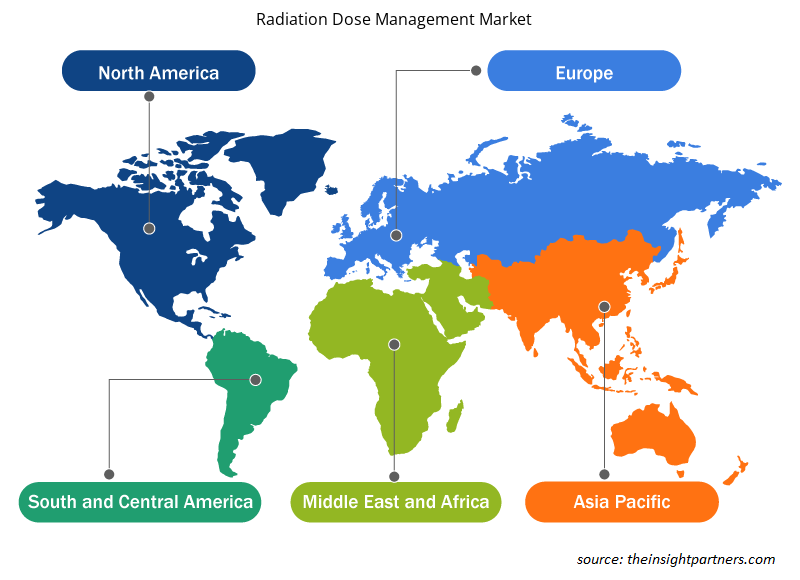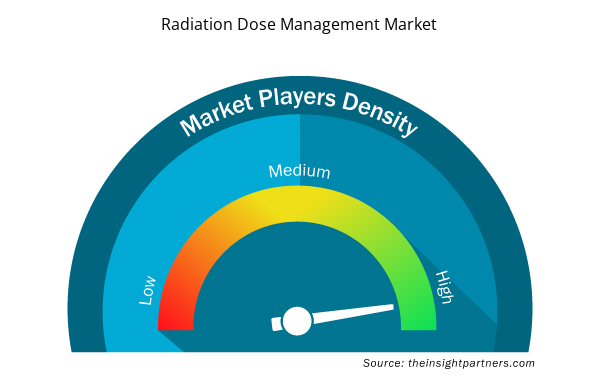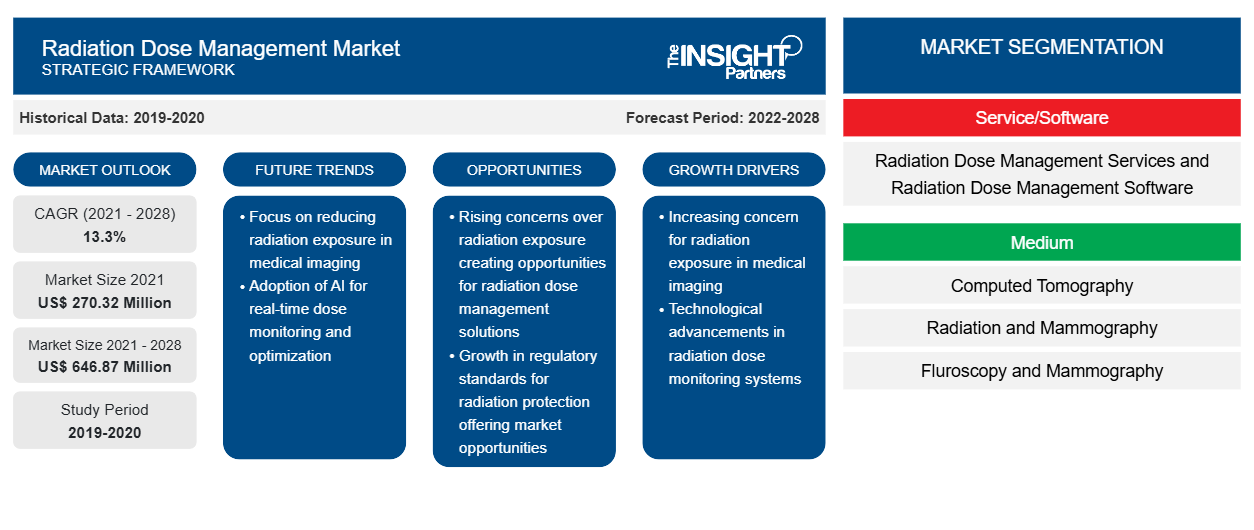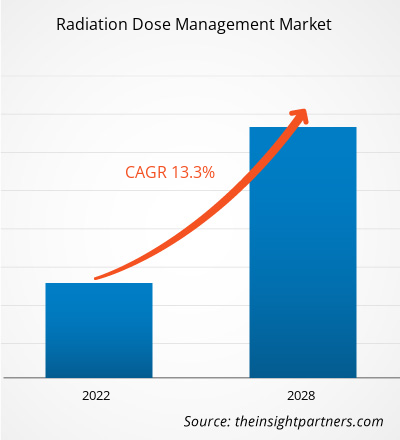辐射剂量管理市场规模预计将从 2021 年的 2.7032 亿美元增至 2028 年的 6.4687 亿美元;预计 2021-2028 年期间的复合年增长率为 13.3%。
放射治疗是医学科学的一个重要分支。癌症、心血管疾病等各种疾病都是通过电磁波进行诊断和治疗的。它被广泛用于治疗不同类型的癌症。然而,放射治疗也有副作用。因此,在任何基于放射的医疗程序中,监测正确的辐射剂量都至关重要。辐射剂量是照射到患者身上的辐射量。辐射剂量管理包括有关辐射剂量记录软件的信息;实时员工剂量监测;法规遵从性;以及剂量减少技术,例如交互式重建软件。
辐射剂量管理市场的增长归因于人们对辐射暴露的担忧日益增加以及需要放射治疗的癌症病例不断增加。然而,组织挑战和缺乏剂量优化基准阻碍了市场的增长。
定制此报告以满足您的需求
您可以免费定制任何报告,包括本报告的部分内容、国家级分析、Excel 数据包,以及为初创企业和大学提供优惠和折扣
- 获取此报告的关键市场趋势。这个免费样品将包括数据分析,从市场趋势到估计和预测。
市场洞察
介入放射学和核医学日益受到关注
医疗技术、设备制造和成像设备的快速发展使得原有的程序得到改进,技术水平也得到提高,程序适应症也得到扩大。新技术已经得到开发,一些技术被迁移到其他成像方式。由于成像效率高,全球范围内正在实施更多的介入放射学和核医学程序。据核医学学会称,美国每年大约进行 2000 万次核医学程序。据世界核协会报道,全球有 10,000 多所医院在医学中使用放射性同位素,90% 的放射性同位素程序是诊断性的。拜耳医疗保健和 Sectra 医疗系统等市场参与者提供专门用于介入成像和核医学中 RDM 的剂量管理软件。因此,对介入放射学和核医学的日益关注为市场的增长提供了机会。
基于服务/软件的洞察
根据服务/软件,全球辐射剂量管理市场已细分为辐射剂量管理服务和辐射剂量管理软件。辐射剂量管理软件部分在 2021 年占据了最大的市场份额,预计在预测期内市场复合年增长率将达到 13.6%。
基于媒介的洞察
根据媒介,全球辐射剂量管理市场细分为计算机断层扫描、放射和乳房 X 线摄影、透视和乳房 X 线摄影以及其他媒介。计算机断层扫描领域在 2021 年占据了最大的市场份额,预计在预测期内市场复合年增长率为 13.8%。
辐射剂量管理市场区域洞察
Insight Partners 的分析师已详细解释了预测期内影响辐射剂量管理市场的区域趋势和因素。本节还讨论了北美、欧洲、亚太地区、中东和非洲以及南美和中美洲的辐射剂量管理市场细分和地理位置。

- 获取辐射剂量管理市场的区域特定数据
辐射剂量管理市场报告范围
| 报告属性 | 细节 |
|---|---|
| 2021 年市场规模 | 2.7032亿美元 |
| 2028 年市场规模 | 6.4687亿美元 |
| 全球复合年增长率(2021 - 2028) | 13.3% |
| 史料 | 2019-2020 |
| 预测期 | 2022-2028 |
| 涵盖的领域 | 按服务/软件
|
| 覆盖地区和国家 | 北美
|
| 市场领导者和主要公司简介 |
|
辐射剂量管理市场参与者密度:了解其对业务动态的影响
辐射剂量管理市场正在快速增长,这得益于终端用户需求的不断增长,而这些需求又源于消费者偏好的不断变化、技术进步以及对产品优势的认识不断提高等因素。随着需求的增加,企业正在扩大其产品范围,进行创新以满足消费者的需求,并利用新兴趋势,从而进一步推动市场增长。
市场参与者密度是指在特定市场或行业内运营的企业或公司的分布情况。它表明在给定市场空间中,相对于其规模或总市场价值,有多少竞争对手(市场参与者)存在。
在辐射剂量管理市场运营的主要公司有:
- 富士胶片控股株式会社
- 拜耳公司
- 博莱科影像公司
- 通用电气医疗
- 荷兰皇家飞利浦公司
免责声明:上面列出的公司没有按照任何特定顺序排列。

- 获取辐射剂量管理市场顶级关键参与者概述
基于最终用户的洞察
根据最终用户,辐射剂量管理市场分为医院、研究和医疗机构等。医院部门在 2021 年占据了最大的市场份额,预计在预测期内将实现 13.6% 的最高复合年增长率。
产品发布和审批是公司扩大全球业务和产品组合的常用策略。此外,辐射剂量管理市场参与者专注于合作战略来扩大客户群,这反过来又使他们能够在全球范围内保持自己的品牌名称。
公司简介
- 富士胶片控股株式会社
- 拜耳公司
- 博莱科影像公司
- 通用电气医疗
- 荷兰皇家飞利浦公司
- 美德广场
- 诺瓦拉德公司
- 凯伦公司
- 塞克特拉公司
- PACSHealth有限责任公司
- 历史分析(2 年)、基准年、预测(7 年)及复合年增长率
- PEST 和 SWOT 分析
- 市场规模价值/数量 - 全球、区域、国家
- 行业和竞争格局
- Excel 数据集



Report Coverage
Revenue forecast, Company Analysis, Industry landscape, Growth factors, and Trends

Segment Covered
This text is related
to segments covered.

Regional Scope
North America, Europe, Asia Pacific, Middle East & Africa, South & Central America

Country Scope
This text is related
to country scope.
常见问题
The Radiation Dose Management software segment dominated the global radiation dose management market and held the largest revenue share of 77.67% in 2021.
Radiation dose management involves services and software that keep records of the radiation doses, real time dose monitoring, regulatory compliance. It is an information technology which is considerate in lowering the dose with integrative reconstruction software. The software assists to find the right way to radiation dose for a patient to get treated by the integration of medical technology and insightful data & services.
Key factors that are driving the growth of this market are growing concerns related to radiation exposure, and rising cases of cancer demanding radiation therapy.
The Computed Tomography segment dominated the global radiation dose management market and held the largest revenue share of 42.54% in 2021.
The hospitals segment dominated the global radiation dose management market and accounted for the largest revenue share of 51.14% in 2021.
Global radiation dose management market is segmented by region into North America, Europe, Asia Pacific, Middle East & Africa and South & Central America. In North America, the U.S. is the largest market for radiation dose management. The market growth in the country is attributed to the factors such as the stringent legislative and accreditation requirements regarding the reporting and optimization of radiation doses, high adoption of HCIT technologies, and the presence of stringent regulatory requirements regarding patient safety. And, North America is the fastest-growing region growing at the CAGR of 13.8% during the forecast period.
The radiation dose management market majorly consists of the players such as FUJIFILM Holdings Corporation; Bayer AG; Bracco Imaging S.p.A; GE Healthcare; Koninklijke Philips N.V.; Medsquare; Novarad Corporation; QAELUM INC; Sectra AB; PACSHealth, LLC: among others.
Trends and growth analysis reports related to Technology, Media and Telecommunications : READ MORE..
List of Companies - Radiation Dose Management Market
- FUJIFILM Holdings Corporation
- Bayer AG
- Bracco Imaging S.p.A
- GE Healthcare
- Koninklijke Philips N.V.
- Medsquare
- Novarad Corporation
- QAELUM INC
- Sectra AB
- PACSHealth, LLC
The Insight Partners performs research in 4 major stages: Data Collection & Secondary Research, Primary Research, Data Analysis and Data Triangulation & Final Review.
- Data Collection and Secondary Research:
As a market research and consulting firm operating from a decade, we have published and advised several client across the globe. First step for any study will start with an assessment of currently available data and insights from existing reports. Further, historical and current market information is collected from Investor Presentations, Annual Reports, SEC Filings, etc., and other information related to company’s performance and market positioning are gathered from Paid Databases (Factiva, Hoovers, and Reuters) and various other publications available in public domain.
Several associations trade associates, technical forums, institutes, societies and organization are accessed to gain technical as well as market related insights through their publications such as research papers, blogs and press releases related to the studies are referred to get cues about the market. Further, white papers, journals, magazines, and other news articles published in last 3 years are scrutinized and analyzed to understand the current market trends.
- Primary Research:
The primarily interview analysis comprise of data obtained from industry participants interview and answers to survey questions gathered by in-house primary team.
For primary research, interviews are conducted with industry experts/CEOs/Marketing Managers/VPs/Subject Matter Experts from both demand and supply side to get a 360-degree view of the market. The primary team conducts several interviews based on the complexity of the markets to understand the various market trends and dynamics which makes research more credible and precise.
A typical research interview fulfils the following functions:
- Provides first-hand information on the market size, market trends, growth trends, competitive landscape, and outlook
- Validates and strengthens in-house secondary research findings
- Develops the analysis team’s expertise and market understanding
Primary research involves email interactions and telephone interviews for each market, category, segment, and sub-segment across geographies. The participants who typically take part in such a process include, but are not limited to:
- Industry participants: VPs, business development managers, market intelligence managers and national sales managers
- Outside experts: Valuation experts, research analysts and key opinion leaders specializing in the electronics and semiconductor industry.
Below is the breakup of our primary respondents by company, designation, and region:

Once we receive the confirmation from primary research sources or primary respondents, we finalize the base year market estimation and forecast the data as per the macroeconomic and microeconomic factors assessed during data collection.
- Data Analysis:
Once data is validated through both secondary as well as primary respondents, we finalize the market estimations by hypothesis formulation and factor analysis at regional and country level.
- Macro-Economic Factor Analysis:
We analyse macroeconomic indicators such the gross domestic product (GDP), increase in the demand for goods and services across industries, technological advancement, regional economic growth, governmental policies, the influence of COVID-19, PEST analysis, and other aspects. This analysis aids in setting benchmarks for various nations/regions and approximating market splits. Additionally, the general trend of the aforementioned components aid in determining the market's development possibilities.
- Country Level Data:
Various factors that are especially aligned to the country are taken into account to determine the market size for a certain area and country, including the presence of vendors, such as headquarters and offices, the country's GDP, demand patterns, and industry growth. To comprehend the market dynamics for the nation, a number of growth variables, inhibitors, application areas, and current market trends are researched. The aforementioned elements aid in determining the country's overall market's growth potential.
- Company Profile:
The “Table of Contents” is formulated by listing and analyzing more than 25 - 30 companies operating in the market ecosystem across geographies. However, we profile only 10 companies as a standard practice in our syndicate reports. These 10 companies comprise leading, emerging, and regional players. Nonetheless, our analysis is not restricted to the 10 listed companies, we also analyze other companies present in the market to develop a holistic view and understand the prevailing trends. The “Company Profiles” section in the report covers key facts, business description, products & services, financial information, SWOT analysis, and key developments. The financial information presented is extracted from the annual reports and official documents of the publicly listed companies. Upon collecting the information for the sections of respective companies, we verify them via various primary sources and then compile the data in respective company profiles. The company level information helps us in deriving the base number as well as in forecasting the market size.
- Developing Base Number:
Aggregation of sales statistics (2020-2022) and macro-economic factor, and other secondary and primary research insights are utilized to arrive at base number and related market shares for 2022. The data gaps are identified in this step and relevant market data is analyzed, collected from paid primary interviews or databases. On finalizing the base year market size, forecasts are developed on the basis of macro-economic, industry and market growth factors and company level analysis.
- Data Triangulation and Final Review:
The market findings and base year market size calculations are validated from supply as well as demand side. Demand side validations are based on macro-economic factor analysis and benchmarks for respective regions and countries. In case of supply side validations, revenues of major companies are estimated (in case not available) based on industry benchmark, approximate number of employees, product portfolio, and primary interviews revenues are gathered. Further revenue from target product/service segment is assessed to avoid overshooting of market statistics. In case of heavy deviations between supply and demand side values, all thes steps are repeated to achieve synchronization.
We follow an iterative model, wherein we share our research findings with Subject Matter Experts (SME’s) and Key Opinion Leaders (KOLs) until consensus view of the market is not formulated – this model negates any drastic deviation in the opinions of experts. Only validated and universally acceptable research findings are quoted in our reports.
We have important check points that we use to validate our research findings – which we call – data triangulation, where we validate the information, we generate from secondary sources with primary interviews and then we re-validate with our internal data bases and Subject matter experts. This comprehensive model enables us to deliver high quality, reliable data in shortest possible time.


 获取此报告的免费样本
获取此报告的免费样本